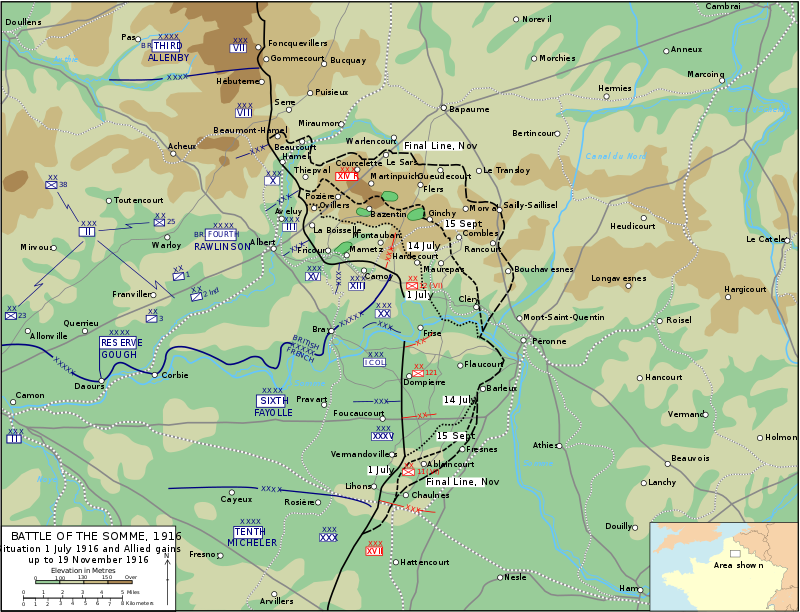
Fricourt Salient July 1916
In military terminology, a “salient” refers to a protrusion or bulge in the frontline of an army’s position into enemy territory. It is a geographical feature of the battlefield where the front lines form a concave shape, making the area vulnerable to attacks from multiple sides. During the Battle of the Somme, which took place from July 1 to November 18, 1916, the significance of the salient played a crucial role in the outcome of the battle.
The Battle of the Somme was a major offensive launched by the British and French forces against the German army during World War I. The main objective was to relieve pressure on the French forces, who were engaged in a deadly stalemate at Verdun, and to break through the German lines on the Western Front. The Somme River area in northern France was chosen as the battleground.
At the onset of the battle, the British and French forces sought to push the Germans back by attacking along a wide front. However, due to certain tactical and strategic errors, the Allies were unable to achieve a breakthrough. Instead, they ended up creating a salient in the German lines, specifically in the sector defended by the British.
The creation of this salient had several significant implications:
- Vulnerability: The British forces found themselves holding a position that was exposed on three sides. The Germans could concentrate their artillery fire from multiple directions, causing heavy casualties and making it challenging for the British to hold their ground.
- Diverted Resources: The creation of the salient forced the British to divert their troops and resources to defend the vulnerable flanks. This diversion weakened the overall strength of the British forces and hindered their ability to launch further offensives effectively.
- German Counterattacks: The German army recognized the strategic significance of the salient and launched counterattacks to exploit this vulnerability. These attacks aimed to push the Allies back and possibly even surround and cut off their forces.
- Prolonged Battle: The establishment of the salient turned the Battle of the Somme into a protracted and grueling conflict. Instead of achieving a swift breakthrough, the battle turned into a prolonged and bloody stalemate, resulting in significant casualties on both sides.
Overall, the salient at the Battle of the Somme played a critical role in shaping the nature and outcome of the conflict. It turned the battle into a much more challenging and costly endeavor for the Allies, leading to strategic realignments and costly offensives and counterattacks. The battle became a symbol of the horrors of modern warfare, with both sides suffering immense losses and gaining little strategic advantage from the prolonged and brutal fighting.
